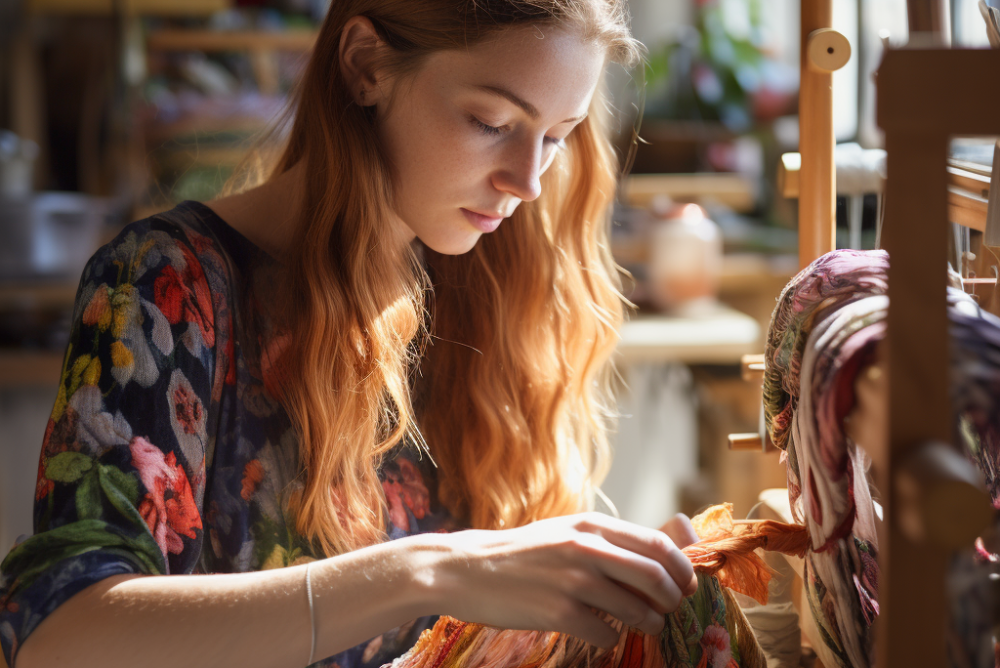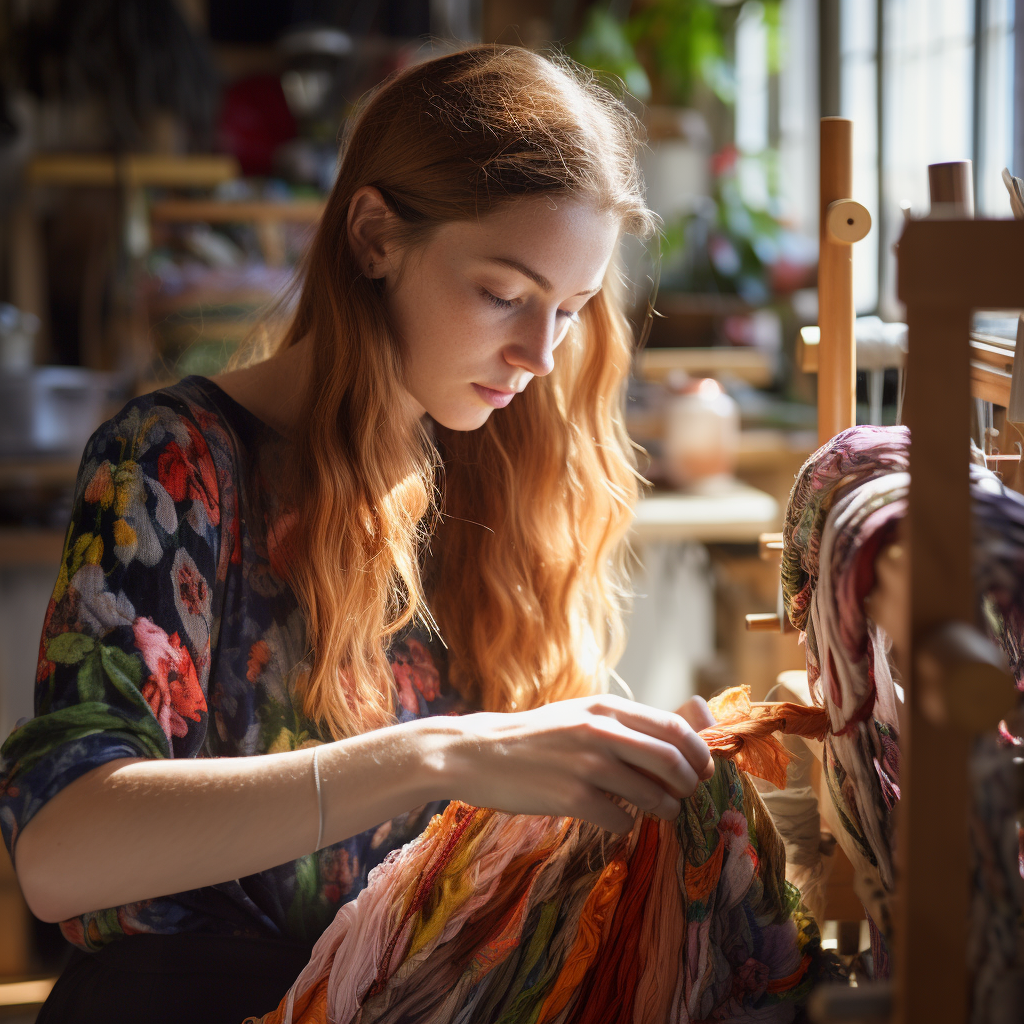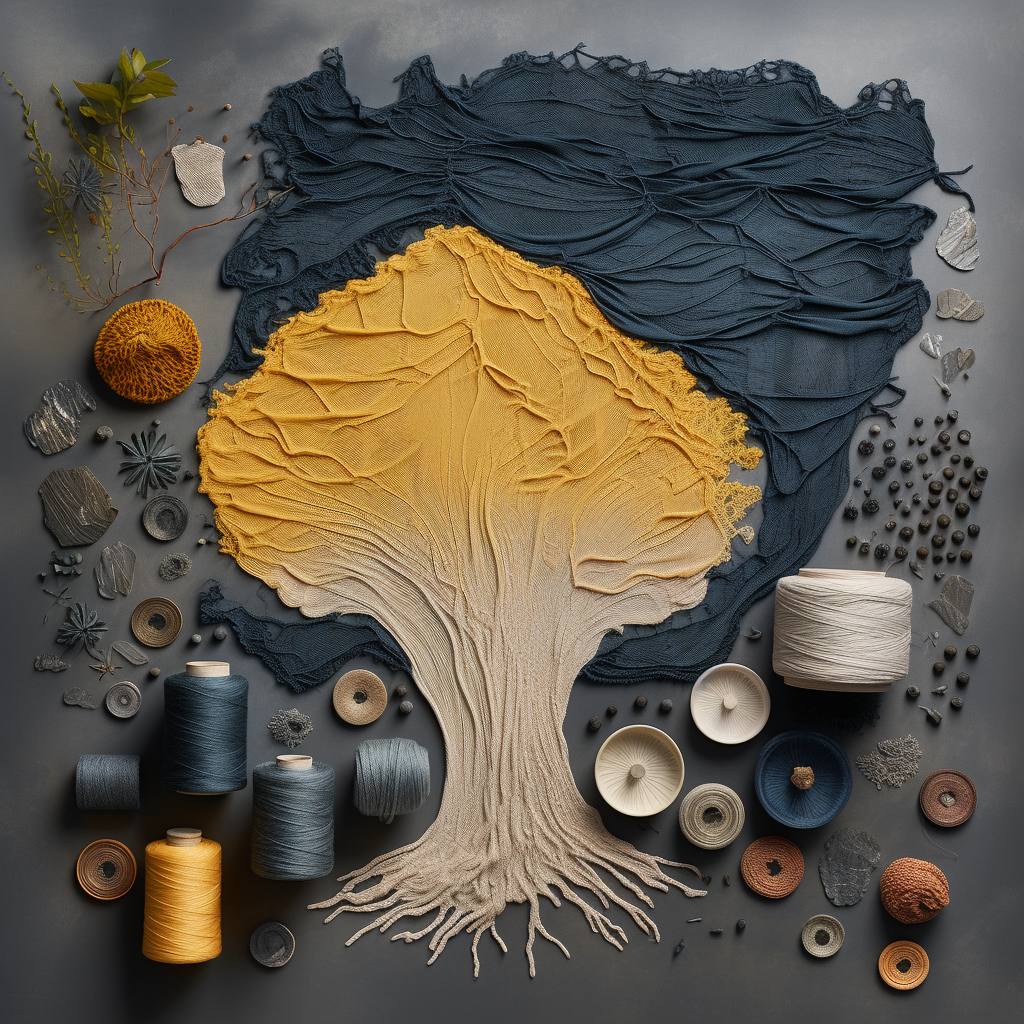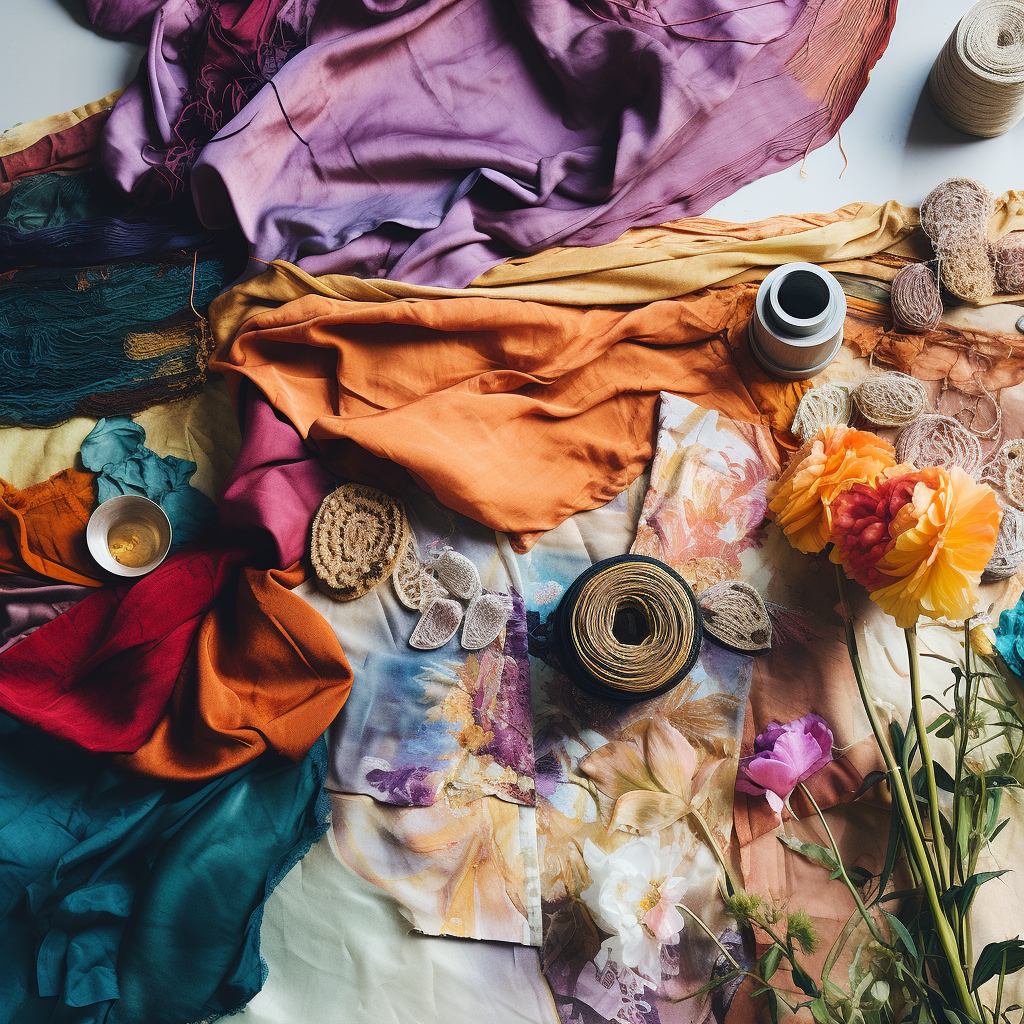Sustainable Textiles: Pioneering a Greener Future


The textile industry, spanning from intricate hand-woven fabrics to mass-produced apparel, has been an integral part of our cultural and economic fabric for centuries. However, as with many industries, it has faced its share of challenges, particularly concerning environmental and ethical issues. The global call for more sustainable and circular practices is louder than ever, pushing industries, including textiles, to re-examine and reinvent their processes. With a rich tapestry of history intertwined with the modern challenges of sustainability, the textile sector now stands at a critical junction.
Increasing awareness of the environmental and social impacts of textile production and disposal has given rise to key concepts: sustainability, circularity, transparency, and accountability. These principles are now guiding the industry towards a more responsible future. In this exploration, we'll delve deep into how these concepts are shaping the textile world, underpinned by insights from industry experts and hard data. From understanding the value of renewable fibers to recognizing the need for transparent supply chains, this article aims to shed light on the current state of the textile sector and its ambitious path forward.
Understanding Sustainability in Textiles
The term 'sustainability' has often been bandied about in the corporate world, sometimes without a full understanding of its implications. For the textile industry, sustainability encapsulates a myriad of factors - from sourcing raw materials and energy consumption in production, to the longevity of products and their eventual disposal.
- Sustainable Materials: Organic cotton, bamboo, and hemp are gaining traction as eco-friendly alternatives to traditional materials. These crops require less water, fewer pesticides, and have a lower carbon footprint. Moreover, innovations like 'Piñatex', a fabric made from pineapple leaves, and 'Mycotex', derived from mushroom roots, are pushing the boundaries of sustainable materials.
- Reduced Water Consumption: Textile production, especially dyeing and finishing, is notoriously water-intensive. Brands are now investing in water-saving technologies and closed-loop water systems, reducing the industry's freshwater footprint.
- Ethical Labor Practices: Sustainability is not just about the environment; it's about people too. Fair wages, safe working conditions, and respecting workers' rights are paramount in creating a truly sustainable textile industry.
The Circular Model: A Game-Changer for the Textile Industry
The traditional linear economy, characterized by a "take, make, dispose" model, is no longer viable in a world with finite resources. Enter the circular economy—a system that aims to eliminate waste by continually using and reusing resources.
- Circular Design: This involves creating textiles with their end-of-life in mind. Whether it's designing clothes that can be easily recycled or using biodegradable materials, the goal is to ensure products don't end up in landfills.
- Recycling and Upcycling: Discarded textiles are a goldmine waiting to be tapped. Innovations in textile recycling are allowing old garments to be transformed into new, high-quality fibers. Meanwhile, the upcycling movement is turning waste into value, with designers creating fashionable pieces from scrap fabrics.
- Rental and Repair: The idea of 'fashion rental' is gaining popularity, allowing consumers to access trendy pieces without the commitment of purchase. Additionally, brands are offering repair services, emphasizing product longevity and reducing the need for replacements.
The Importance of Transparency in the Textile Chain
Transparency is about shedding light on every step of the textile production process. It allows consumers to make informed choices and holds brands accountable for their practices.
- Traceable Supply Chains: With advancements in technology, it's now possible to track a garment's journey from farm to store. Brands are leveraging blockchain and other tools to provide this data to consumers.
- Open Communication: Honest marketing, clear labeling, and open dialogue with consumers are crucial. Misleading claims or 'greenwashing' can damage trust and undermine genuine sustainability efforts.
- Collaborative Efforts: Brands are joining forces with NGOs, certification bodies, and other industry players to standardize practices and ensure consistency in sustainable measures.
Accountability: Holding Brands and Manufacturers Responsible
In an age where information is at our fingertips, consumers demand more than just quality products. They seek ethical assurances, calling on brands and manufacturers to not only claim responsibility but also prove it.
- Third-Party Certifications: Recognized certifications like the Global Organic Textile Standard (GOTS) and OEKO-TEX provide a benchmark of sustainability and safety. Brands acquiring such certifications show a dedication to maintaining set standards.
- Consumer Activism: Modern consumers are vocal and empowered. Through social media campaigns and grassroots movements, they're holding brands accountable for unethical practices, forcing many to revamp their strategies.
- Regulatory Frameworks: Governments worldwide are introducing stringent regulations, ensuring brands adhere to sustainable practices. Penalties for non-compliance and incentives for green initiatives are guiding the industry towards a more accountable future.

Expert Insights: What Top Voices in the Field are Saying
The push towards sustainable textiles isn't just a passing trend but is backed by industry stalwarts who understand the sector's intricacies.
Dr. Jane Smith, a Textile Historian, opines, "The move towards sustainable textiles isn't just a return to our roots but a stride into the future. Ancient civilizations relied on biodegradable materials, but modern innovations are taking sustainability to new heights."
Mark O'Brien, a Sustainability Analyst, states, "Transparency isn't just a buzzword. It's the foundation of trust between brands and consumers. As we scrutinize supply chains, we're ensuring a future where exploitation has no place."
Fashion Designer, Lila Nguyen, emphasizes the role of designers, "Our creations set trends, but they can also set standards. By championing sustainable materials and ethical practices, we're weaving a new narrative for the fashion world."
The Role of Technological Advancements in Promoting Sustainability
As the adage goes, necessity is the mother of invention. The textile industry's sustainability challenges have spurred technological innovations, reshaping its future.
- Digital Printing: Traditional dyeing methods consume vast water quantities. Digital printing offers an alternative, drastically reducing water usage and waste.
- AI and Predictive Analysis: By forecasting fashion trends and consumer behavior, brands can produce in quantities that match demand, minimizing overproduction and waste.
- Bioengineering: Scientists are developing lab-grown leather and spider-silk-like materials. These alternatives promise the texture and durability of traditional materials without the environmental cost.
Each advancement, from the microscopic threads to massive production lines, heralds an era where sustainability isn't an afterthought but the core of the textile industry.
As we further unfold the story of sustainable textiles, the spotlight will shine on real-world trailblazers and the challenges still looming on the horizon. But one thing remains clear: with collective effort and unwavering commitment, a sustainable textile future is not just a vision—it's a tangible reality in the making.
Case Studies: Brands Leading the Way in Sustainable Practices
The journey towards a more sustainable textile industry is paved with challenges, but several brands are not only navigating these hurdles but also setting benchmarks for others.
- Patagonia: A pioneer in sustainable fashion, Patagonia has a 'Worn Wear' program encouraging customers to buy used products. Their dedication to transparency is evident in their 'Footprint Chronicles', detailing the environmental impact of their products.
- Eileen Fisher: Committed to organic materials and ethical manufacturing, Eileen Fisher has a 'Renew' program where consumers can return old garments to be repurposed, ensuring longevity and reducing waste.
- Stella McCartney: A luxury brand with sustainability at its heart, Stella McCartney's products are vegetarian, using alternatives to leather and fur. Their commitment to circularity and transparency is evident in every collection.
Challenges & Solutions: Navigating the Path Ahead
While strides are being made, the road to complete sustainability in textiles is still unfolding. Recognizing these challenges and proactively seeking solutions is the need of the hour.
- Fast Fashion's Allure: The appeal of trendy, affordable clothing is undeniable. The fast fashion model, however, leads to overproduction and waste. Solution? Brands can adopt a 'slow fashion' ethos, focusing on quality, longevity, and timeless designs.
- Supply Chain Complexities: The global nature of the textile industry makes traceability challenging. Solution? Integrating technology like blockchain can offer a transparent, tamper-proof record of the product journey.
- Consumer Mindset: While many consumers are becoming eco-conscious, there's still a significant portion prioritizing price over sustainability. Solution? Education and awareness campaigns can shift perceptions, making sustainability a key buying factor.

Conclusion
The textile industry's tapestry is vast and varied, but a common thread weaving through its future narrative is sustainability. From grassroots activists to industry titans, the collective call for a greener, more ethical textile world is resonating loud and clear. The journey might be complex, but with innovation, dedication, and a shared vision, the industry is poised for a transformation that benefits not just businesses, but the planet and its people.
In this exploration, we've just scratched the surface. But as consumers, designers, manufacturers, and stakeholders, the power to shape the textile industry's future lies in our hands. Through informed choices, continuous learning, and unwavering commitment, we can ensure that the garments adorning us reflect not just our personal style, but our values and aspirations for a sustainable world.
FAQs on Sustainable Textiles and Industry Practices
Q1: What is sustainable textile?
A1: Sustainable textile refers to materials and production methods that are environmentally friendly and socially responsible, reducing ecological footprints and promoting ethical practices.
Q2: How does the circular model benefit the textile industry?
A2: The circular model emphasizes reducing waste by continuously reusing resources. For textiles, it means designing products for longevity, recycling old garments, and ensuring minimal environmental impact.
Q3: Are sustainable textiles more expensive than regular ones?
A3: Initially, sustainable textiles might have higher costs due to ethical labor practices and eco-friendly materials. However, in the long run, they can be cost-effective as they tend to be more durable and reduce environmental cleanup costs.
Q4: What's the problem with fast fashion in terms of sustainability?
A4: Fast fashion focuses on producing cheap, trendy clothes quickly, leading to overproduction, quick disposal, wastage, and often compromises on ethical labor and environmental standards.
Q5: How can consumers ensure they're buying sustainable textiles?
A5: Consumers can look for certifications like GOTS or OEKO-TEX, research brands' sustainability initiatives, and prioritize quality over quantity to ensure they're making sustainable choices.
Q6: What roles do technology and innovation play in promoting sustainable textiles?
A6: Technology aids in creating eco-friendly materials, optimizing resource usage, and ensuring transparency in the supply chain. Innovations provide alternative materials and efficient production methods.
Q7: How are brands held accountable for their sustainable claims?
A7: Brands are held accountable through third-party certifications, stringent governmental regulations, and the vigilant eyes of informed consumers and activists who demand transparency.
Q8: Are organic materials like organic cotton always sustainable?
A8: While organic materials generally have a lower environmental impact, true sustainability also considers factors like water usage, dyeing processes, and labor practices. Organic is a step towards sustainability but not the sole criterion.
Q9: How does sustainable textile production impact workers in the industry?
A9: Sustainable textile production usually emphasizes ethical labor practices, ensuring fair wages, safe working conditions, and respect for workers' rights.





-500x500.jpg)
-500x500.jpg)
-500x500.jpg)
-500x500.jpg)
-500x500.jpg)